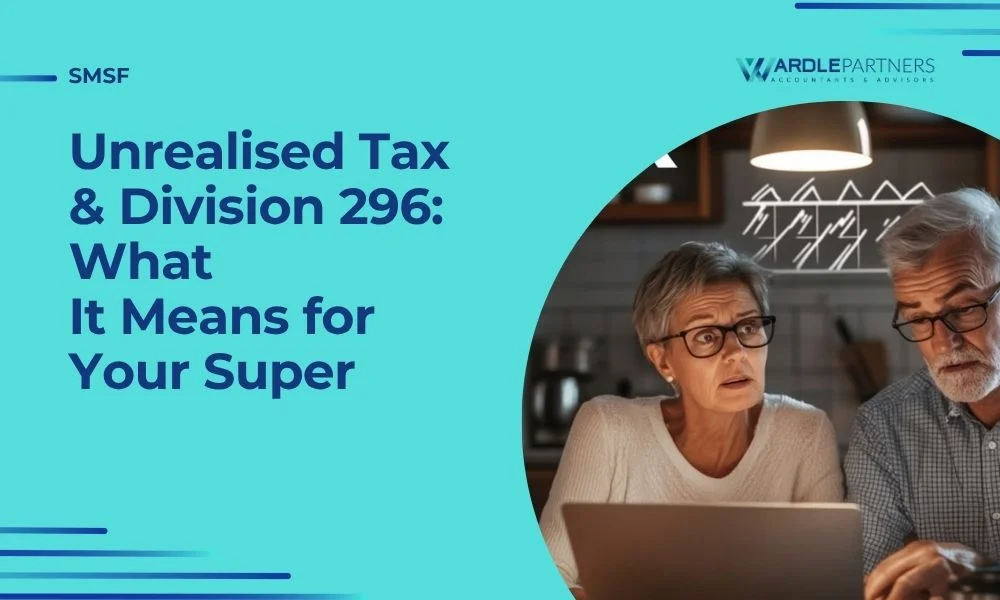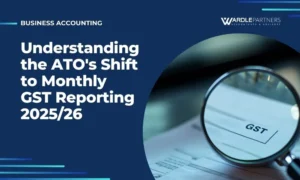What is unrealised tax? So, you’ve diligently saved for retirement, making wise investment choices to grow your superannuation. Then, out of nowhere, the ATO hits you with a tax bill—not because you’ve sold assets or realised any profits, but simply because your investments have increased in value on paper.
Welcome to Division 296 — a proposed tax reform that could make this scenario a reality for Australians.
What Is Division 296?
The Australian Labor Government has proposed Division 296 to apply an additional 15% tax on earnings from superannuation and Self-Managed Superannuation Fund (SMSF) balances exceeding $3 million.
The legislation passed the House of Representatives prior to the May Federal election. Following the election result, the Greens will now hold the balance of power in the Senate—without needing support from independents. Notably, the Greens have publicly called on the Government to reduce the threshold to $2 million. Whether they succeed remains to be seen.
But here’s the kicker — the ATO doesn’t calculate this tax based on traditional realised income. Instead, it includes unrealised gains, so you could end up paying tax on the growth of your Super or SMSF even if you haven’t sold a single asset.
The calculation is based on the movement in your Total Superannuation Balance (TSB) from the start to the end of the financial year, adjusted for contributions and withdrawals. If your balance has gone up on paper — even without realising any capital gains — a portion of that growth will be taxed.
If your Super balance falls (i.e. you have negative earnings), it’s expected that those losses can be carried forward to offset future Division 296 tax liabilities.
Another key point: the $3 million threshold will not be indexed. So over time, as super balances grow with inflation, more Australians could find themselves caught by this tax.
This represents a major shift in the way super is taxed in Australia — and it’s already raising eyebrows across the financial industry. Many view it as a disincentive to grow Super balances beyond $3 million, and a significant challenge for long-term financial planning.
The Personal Toll: How It Affects You
Retirement Savings at Risk
If your Super balance exceeds $3 million, this tax could significantly affect your retirement strategy. Taxing unrealised gains means you may face a tax bill without receiving actual income, potentially forcing early asset sales and interrupting long-term plans.

Examples of Division 296 in Action
Example 1:
An individual’s Total Super Balance increases from $4.5 million to $5 million.
- The unrealised gain is $500,000.
- The portion of the balance over $3 million is: ($5M – $3M) ÷ $5M = 40%
- Taxable amount = 40% of $500,000 = $200,000
- Additional tax = 15% of $200,000 = $30,000
Example 2:
An individual’s balance decreases from $4.5 million to $4 million.
- The unrealised loss is $500,000.
- The portion over $3 million = ($4M – $3M) ÷ $4M = 25%
- Tax loss = 25% of $500,000 = $125,000
- Division 296 tax credit = 15% of $125,000 = $18,750 (carried forward to offset future tax)
Broader Implications
Even if your balance is currently below $3 million, this policy sets a precedent for future changes. Many are concerned that this approach could eventually be extended to other asset classes — impacting a broader range of investors and savers.
The Ripple Effect: Economic Implications
A $95 Billion Blow to the Economy
Analysis by leading asset managers suggests that Division 296 could create a “deadweight loss” of around $95 billion to the Australian economy. That’s not just a statistic — it represents a reduction in capital investment, job creation, and long-term economic growth.
Impact on Investment Behaviour
Taxing unrealised gains could discourage investment in long-term or higher-risk assets. Investors may opt for safer, lower-growth strategies to avoid paper tax bills — potentially reducing investment in sectors such as housing, and infrastructure.
We are already hearing that some people are already exploring ways to reduce exposure, such as gifting wealth to family members or restructuring their holdings to avoid future tax implications. Generally, speaking this is not a strategy we would recommend. We recommend discussing your individual situation with a licensed financial planner and your accountant.
The Debate: Supporters vs. Critics
Government’s Stance
The Labour Government argues that Division 296 promotes fairness, ensuring high-balance Super contribute more to the tax system. They view the policy as a way to rebalance retirement tax concessions and improve budget sustainability.
However, critics are sceptical that this is the real reason. We tend to agree.
Critics’ Concerns
Opponents argue that taxing unrealised gains is fundamentally flawed and economically risky. They point to challenges with liquidity, fairness, and setting a dangerous precedent for other forms of taxation. Norway introduced a similar tax on unrealised gains. The result? A mass exodus of the country’s wealthiest individuals. Over 400 of Norway’s top earners left the country to escape the tax.
Key Takeaways
- Division 296 proposes a 15% tax on Super balances over $3 million, including unrealised gains.
- Individuals could face tax liabilities without actual income, disrupting retirement plans.
- The policy could result in a $95 billion economic loss, impacting investment and jobs.
- The approach sets a precedent that may extend to other assets in the future.
Conclusion
Division 296 introduces a major change to how Australia taxes retirement savings. While it aims to improve fairness, it also raises valid concerns about long-term investment, economic impact, and tax policy precedent.
As the debate continues, one thing is clear — staying informed and being proactive will be essential.
If you’re approaching or above the $3 million Super threshold, now’s the time to start talking to professionals and to stay up to date on this topic.
Contact Wardle Partners Accountants & Advisors to schedule a consultation and ensure your financial plans remain on track amidst changing policies.









